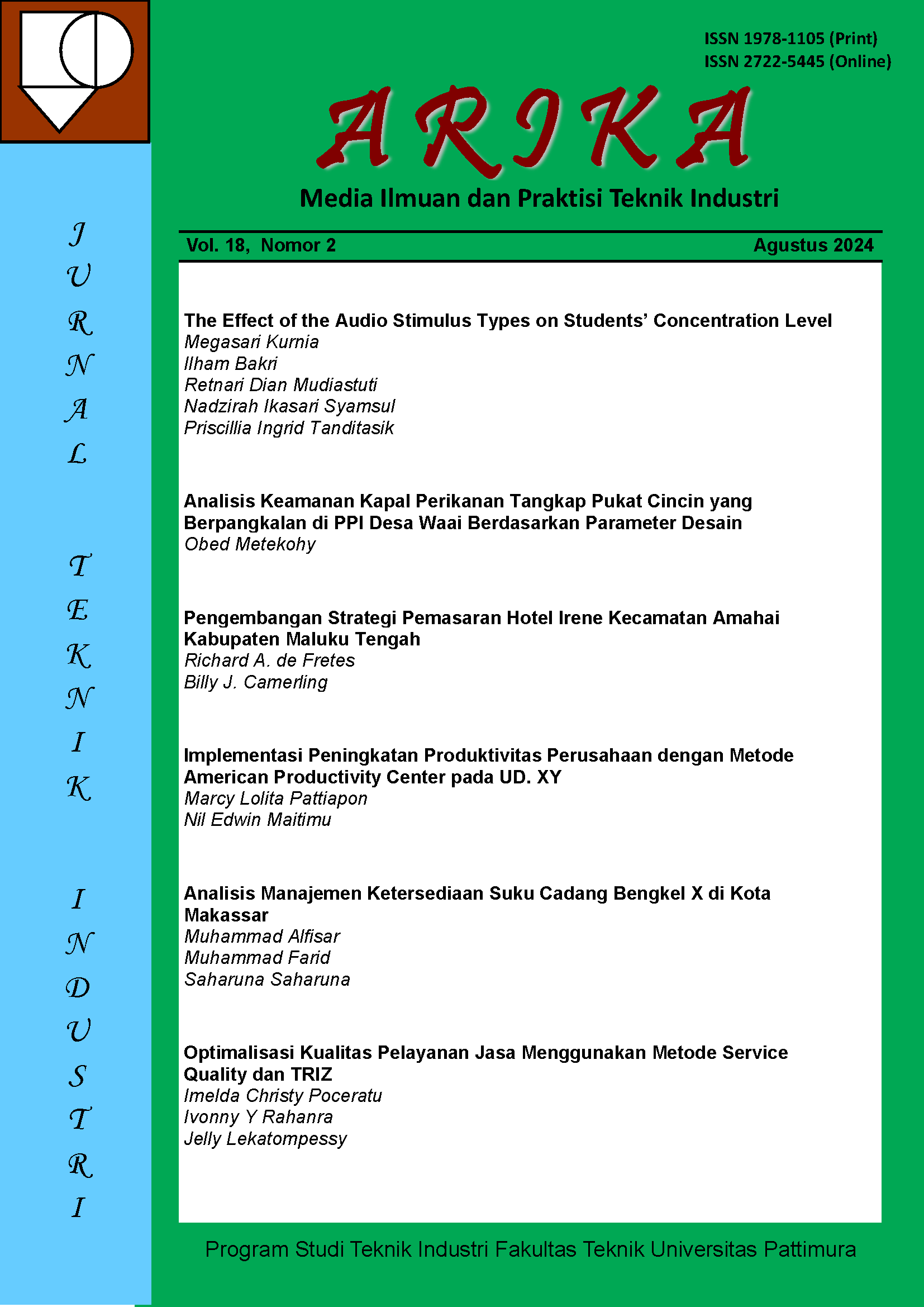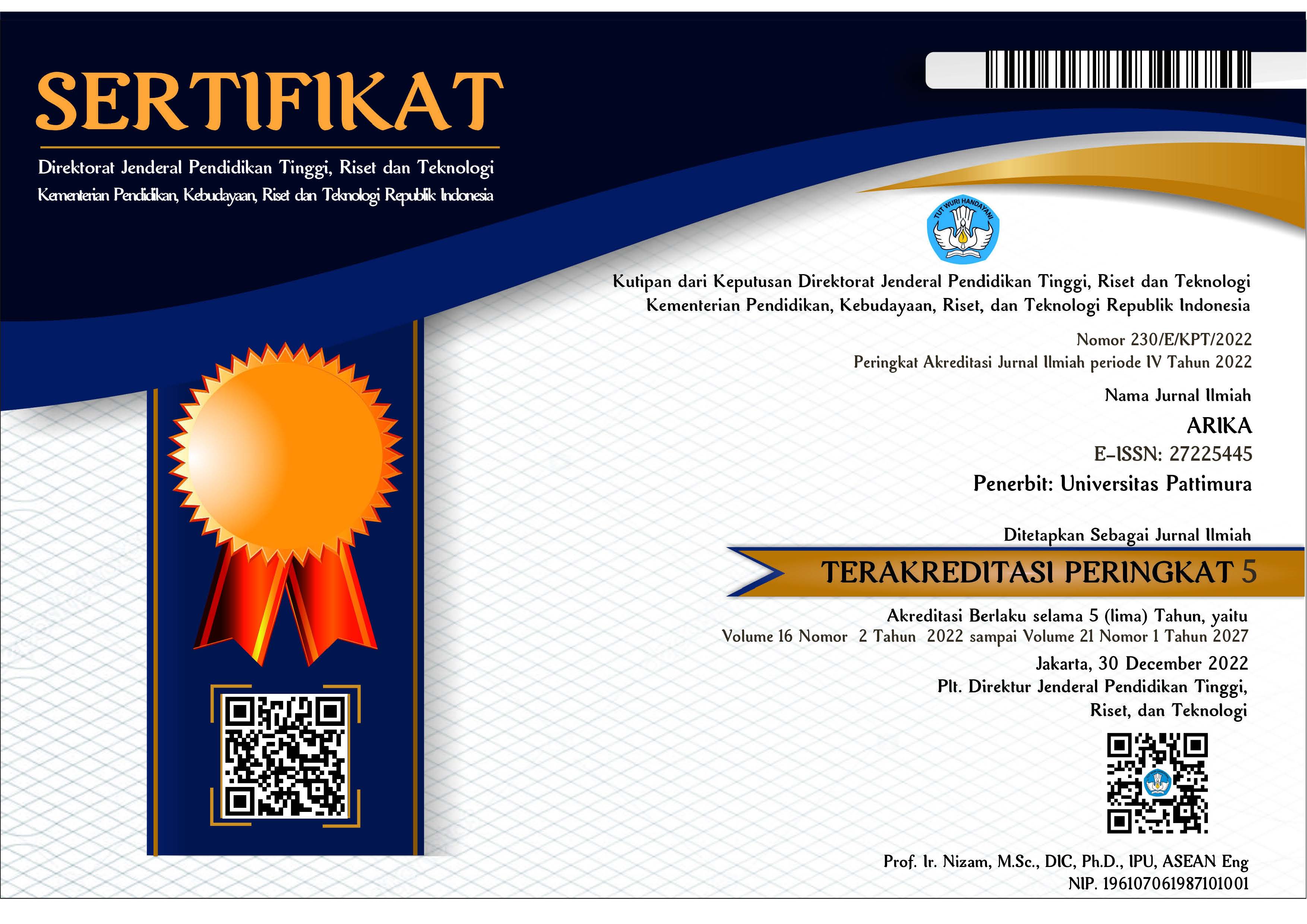The Effect of the Audio Stimulus Types on Students’ Concentration Level
Abstract
Concentration is essential in order to help to perceive and understand the object that is being focused. If students can concentrate, everything can be recorded properly in the brain's memory. If student concentration experiences obstacles in learning activities, there will be obstacles to achieve goals. This study aims to analyze the influence and relationship between concentration levels when listening to different audio stimuli. The methods that can be used quantitatively to see learning concentration are reaction time and memory recall methods for 30 students. The data obtained are processed using statistical tests, that is the T test and ANOVA test to test the differences in sample means from different variables and draw conclusions by finding different data groups. Based on the results of the T test, giving the three audio stimuli to men did not provide a significant average difference in reaction speed. Meanwhile, for female respondents, only the favorite song stimulus had a significant average difference. There is no significant difference in memory recall ability to audio stimulus. For the male respondents, the instrumental stimulus was the most effective stimulus, while for the female, the favorite song stimulus was the most effective.
Downloads
References
Chang, Z., & Zhou, M. (2022). The influence of different music styles on Chinese students’ lateral thinking skills. Thinking Skills and Creativity, 43, 100990.
Cochrane, K. A., Loke, L., de Bérigny, C., & Campbell, A. (2018). Sounds in the moment: designing an interactive EEG nature soundscape for novice mindfulness meditators. Proceedings of the 30th Australian Conference on Computer-Human Interaction, 298–302.
Csikszentmihalyi, M. (2013). Flow: The psychology of happiness. Random House.
Guan, M. (2021). The role of classical music in the creative thinking of university students. Thinking Skills and Creativity, 41, 100925.
Ikbal, B., Sutria, E., & Hidayah, N. (2017). Pengaruh Senam Otak Terhadap Konsentrasi Belajar Mahasiswa Keperawatan UIN Alauddin Makassar. Journal of Islamic Nursing, 2(2), 52–59.
Kurnia, M., Bakri, I., Ikasari, N., Wardani, P. I., & Tanditasik, P. I. (2023). Literature Review: Electroencephalogram (EEG) the Characteristics of Students’ Learning Concentration Due the Audio Stimulus. 9th International Conference on Technical and Vocational Education and Training (ICTVET 2022), 131–139. Atlantis Press.
Li, F., Wang, Z., Tzi Dong Ng, J., & Hu, X. (2021). Studying with Learners’ Own Music: Preliminary Findings on Concentration and Task Load. LAK21: 11th International Learning Analytics and Knowledge Conference, 613–619.
Rosenfield, S., & Mouzon, D. (2013). Gender and mental health. In Handbook of the sociology of mental health (pp. 277–296). Springer.
Shih, Y.-N., Huang, R.-H., & Chiang, H.-Y. (2012). Background music: Effects on attention performance. Work, 42(4), 573–578.
Thoma, M. V, La Marca, R., Brönnimann, R., Finkel, L., Ehlert, U., & Nater, U. M. (2013). The effect of music on the human stress response. PloS One, 8(8), e70156.
Velnath, R., Prabhu, V., & Krishnakumar, S. (2021). Analysis of EEG Signal for the Estimation of Concentration Level of Humans. IOP Conference Series: Materials Science and Engineering, 1084(1), 12003. IOP Publishing.
Copyright (c) 2024 Megasari Kurnia, Ilham Bakri, Retnari Dian Mudiastuti, Nadzirah Ikasari Syamsul, Priscillia Ingrid Tanditasik

This work is licensed under a Creative Commons Attribution-ShareAlike 4.0 International License.
An author who publishes in the ARIKA Jurnal agrees to the following terms:
- The author retains the copyright and grants ARIKA journal the right of first publication of the work simultaneously licensed under the Creative Commons Attribution-ShareAlike 4.0 License that allows others to share the work with an acknowledgment of the work's authorship and initial publication in this journal.
- The author is able to enter into separate, additional contractual arrangements for the non-exclusive distribution of the journal's published version of the work (e.g., post it to an institutional repository or publish it in a book) with the acknowledgment of its initial publication in this journal.
- The author is permitted and encouraged to post his/her work online (e.g., in institutional repositories or on their website) prior to and during the submission process, as it can lead to productive exchanges, as well as earlier and greater citation of the published work (See The Effect of Open Access).










